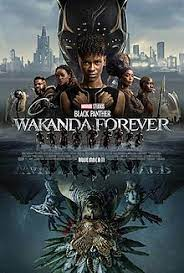FADE TO BLACK or FADE OUT is precisely what it sounds like: the image fades to black, and the screen darkens. This is usually done at the very end of a screenplay, but it can also be done to give a scene or sequence a sense of closure.
Fade in Fade Out Effect Filmora 9 | Wondershare Filmora Tutorial
What is FADE TO BLACK?
The smoothest dissolve transition is fading to black, but it is useful for more than simple endings. Let’s see what it is capable of. Any editing textbook will tell you that editing should be undetectable. The labor of an editor who has done their job well will go unnoticed. We only lose our sense of immersion when we see startling cuts. The moment the audience notices the cut, you have failed.
Walter Murch (editor of Apocalypse Now) argues that editing should follow natural human reactions in his book, The Blink of an Eye. For example, if an action occurs off-screen and the character is distracted by the noise, we should cut to the action as if we were turning our heads. Likewise, if a character passes our protagonist a secret note, we should cut to a closeup of the message.
However, fading to black (or white) appears to be unnatural. When do we see things fade to black, other than when we fall asleep (or pass out)? We are yanking the audience out of the movie by fading a scene to black. So, what makes it so effective?
When to Use FADE TO BLACK in Theater?
Part of the reason the fade-to-black or dissolve-to-black works so well is that it is a distinct theater throwback. In a theater, a fade-out/fade-down (also known as a fade-to-black) is complete darkness.
This is when the crew changes the setting, and the players change their outfits practically. In a symbolic and narrative sense, fade-to-black marks the end of the scene. And that is, in essence, what this classic filmmaking gesture is—the visual climax of a chapter.
When to Use FADE TO BLACK in Filmmaking?
FADE TO BLACK transitions are at their best in the following film scenarios:
- The finish of one theme fades into the start of another.
- Fading from one character’s story to the next.
- Fading to a future time.
The transition from a family dinner scene with no clear thematic finish to a location later in the night (in the same place) would not feel natural.
These ideas may be seen in action in any blockbuster trailer, such as this one:
Avengers – Infinity War Trailer
We witness two dozen fade-ins and -outs during the trailer. Most of them are from clip to clip.
Those that appear to take place simultaneously or in the same area are blended, whereas scenes that occur at various times or in separate locations fade out. These are well-known cinematic characteristics. They indicate that we are moving on to a different part of the story—thematically, temporally, or geographically.
Conclusion
There is no such thing as a “bad” or “right” way to do things in the script, instead, only guidelines. These rules are designed to keep the screenwriter from perplexing the audience; nothing more, nothing less. So, for example, stick to it throughout the screenplay if you were writing over black screens in a specific structure. To know more about the screenplay, you can click here.















